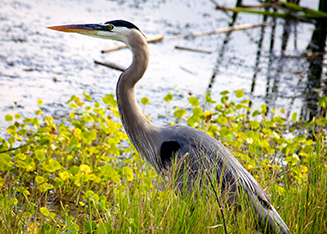Avian Knowledge Network

The Avian Knowledge Network (AKN) is a collaborative effort between a multitude of stakeholders to facilitate and enhance bird conservation. The AKN is comprised of three main components which allow it to achieve its goals:
- Stakeholders (which are people from a variety of backgrounds and disciplines including state and federal agencies, NGOs, citizen scientists, biologists, conservation practitioners, programmers and land managers);
- Technology; and
- Data
Together these make up the public experience with the AKN, including interactive tools, data products and avian conservation information. The AKN has a wealth of information that can help you learn more about birds in a particular area of interest, and help with decision-making for bird conservation. AKN also houses and accepts datasets that help strengthen its informational and decision-making capabilities. To learn more about the AKN, visit the About the AKN webpage, or watch the AKN 101 video.
Publicly available, national scale tools fed by AKN data that support decision-making and help the user see where certain birds have been observed to be occurring spatially and temporally include:
- The AKN Phenology Tool - The Phenology tool allows the user to view abundance and relative probability of presence summaries throughout the year for birds in a particular region or project area. For a short web tutorial on this tool, please visit the Phenology Tool video tutorial.
- The AKN Observations Map - The Observations Map allows the user to visualize, query, and investigate data at surveyed locations by species, survey location or area of interest. It also allows users to view individual datasets separately, and download reports of results. For a short web tutorial on this tool, please visit the AKN Observations Map video tutorial.
- The Migratory Bird portion of the U.S. Fish & Wildlife Service's Information for Planning and Consultation (IPaC) tool - The IPaC tool allows users to view their project or activity’s potential impacts on U.S. Fish & Wildlife Service’s Trust Resources, including endangered and threatened species and migratory bird species of concern. Migratory bird lists in IPaC and associated seasonal probability of presence graphs are generated using best available data on known bird occurrence via data points in the AKN. For a short web tutorial on this tool, please visit the IPaC Tool video tutorial.
The AKN dataset feeding the results in these tools is made up of an aggregate of bird-monitoring (point-count, area search, distance sampling, transect sampling, nest success), bird-banding, and broad-scale citizen science data . New datasets are being added to the AKN every day and continuing to strengthen the results in these tools. All of these data are described and maintained using a common schema (BMDE).
For access to a full list of decision support tools both inside and outside the AKN that can help you learn about birds and look at best available information about their presence, status, trends, important habitats, and more, please visit the Federal Avian Data Center's Decision Support Tools webpage.


